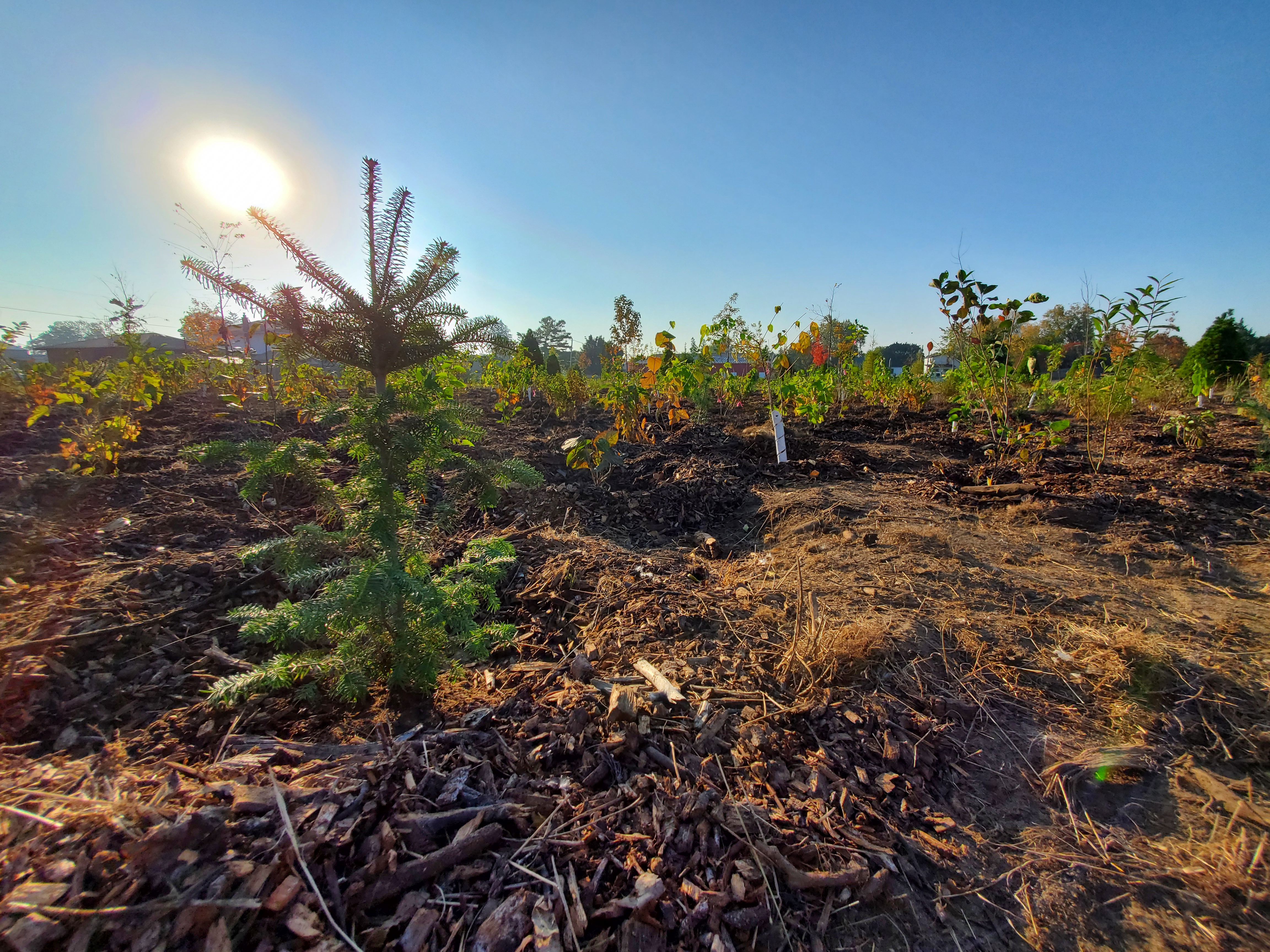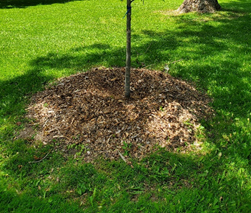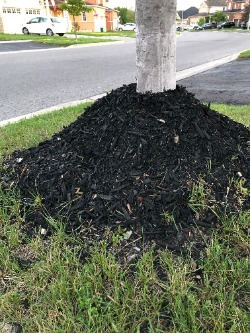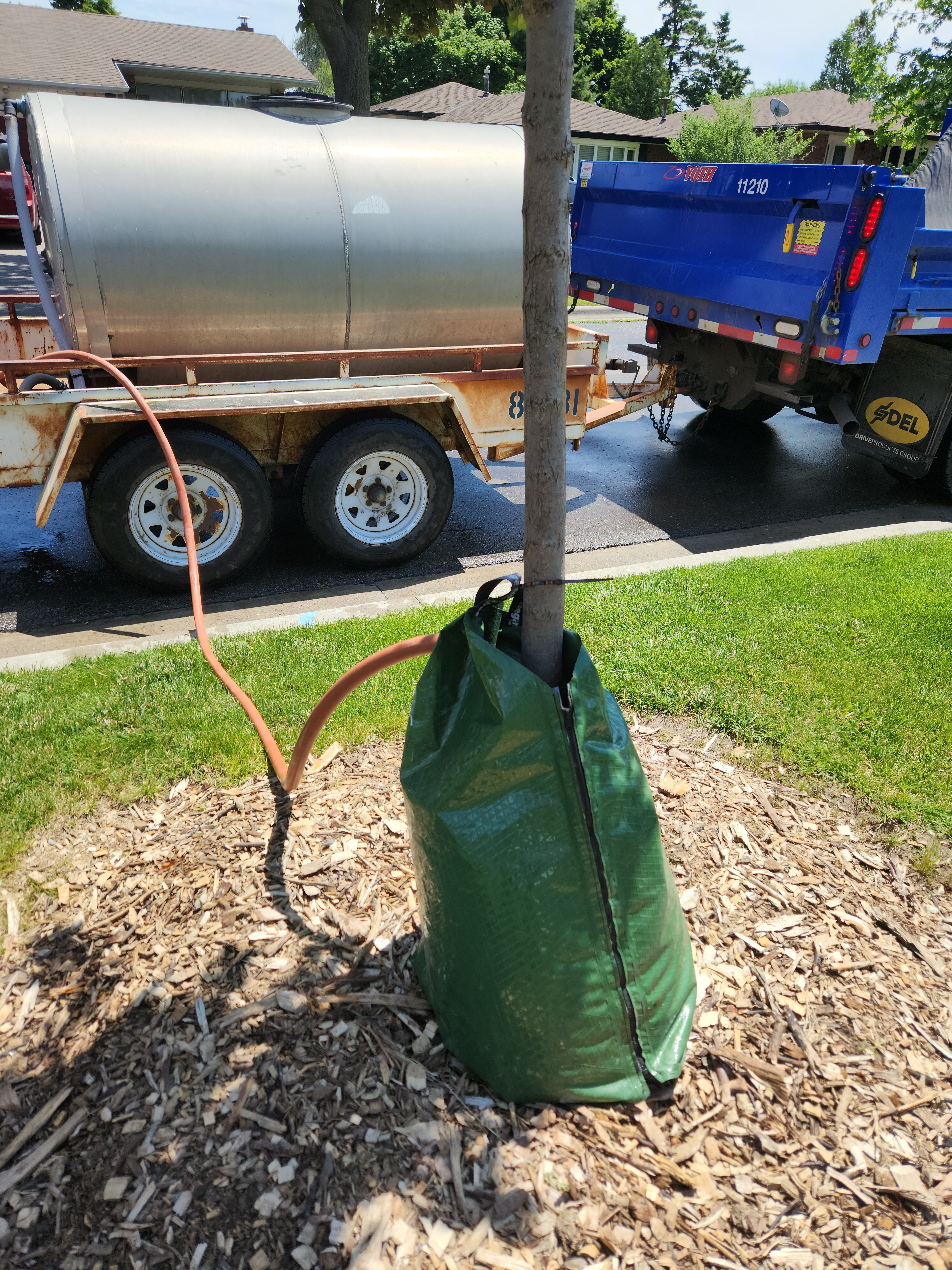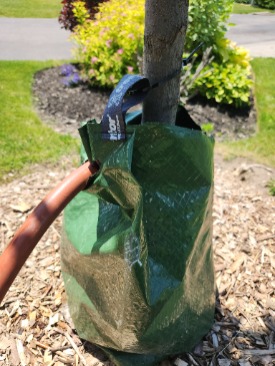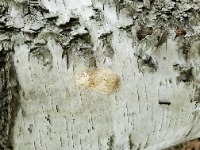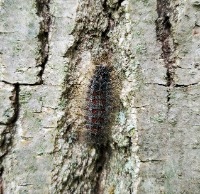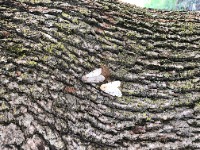Trees
Trees provide many benefits, and Forestry Services care for over 41,500 street trees and 560 hectares of woodlot in public spaces like parks and boulevards. The City of Oshawa Tree By-law protects trees on City property, while the Regional Woodland By-law applies to woodlands larger than 1 hectare. Cutting trees in these areas may need a permit.
City trees are usually within 2m of the curb or 1.5m of the sidewalk. To check if a tree is on your property, refer to your home survey. For concerns about private trees, contact a tree service company.
Forestry requests
Tree Planting
Diversity strengthens our urban canopy. A neighbourhood with one species of tree (monoculture planting) risks total canopy loss from pests or diseases, while planting various tree species reduces these risks and slows their spread.
Over 50+ varieties of trees are planted on our streets and more in parks, focusing on native, pest/disease-resistant species adaptable to urban environments. Things we look for when selecting a tree:
- Root space for healthy growth now and in the future
- Mature canopy size
- Infrastructure (Hydrants, lights, overhead wires)
- Tree shape or form (Arching, Rounded, Low growing, Columnar)
- Competing trees that may affect a new tree's growth
- Potential sight line issues around intersections and schools
Current Projects
| Boulevard planting |
|
This program focuses on replacing boulevard trees in the spring and fall seasons. You may notice markings or flags on the boulevard stump once the locate request is completed. The stump removal and/or tree planting will occur shortly after, and the boulevard area will be restored. Spring Planting is set to commence in May, 2025. Stump grinding and replacement planting will begin in spring throughout the City and will be completed by our contractor. If you have a tree removed before February 28th, 2025, you should receive your new tree by end of spring planting. If it is removed after this date, it will be placed on the fall planting list for replacement. Please Note: If you are unsure if you are on the planting list, or want to request a new tree, please contact Service Oshawa. |
| Russett Park Woodlot restoration |
|
Since 2018, the woodlot had experienced a steady decline because of Pine Wilt. Staff had responded to numerous service calls, including uprooted or fallen trees due to declining health, resulting in more than 100 tree removals. The trees posed a significant risk to park users and adjacent properties. To address concerns, the City undertook large-scale removal of the woodlot in late November 2021. In 2022, 150 large caliper trees were planted to begin restoration efforts in this space. The woodlot will see a wide variety of native species planted throughout and create a more sustainable urban forest for the future. Ongoing restorationThis has provided the City with a unique opportunity to increase biodiversity and resiliency. Scots pine is not native to Canada will take over an area by shading out native plant species, reducing biodiversity and habitat. Restoration has included help from City staff, LEAF and volunteers. Over 1600 trees and shrubs have been planted to date and the area will continue to be planted and monitored by the City to ensure its success. Restoration will increase biodiversity, creating a more resilient forest. This will allow the woodlot to withstand the impacts of climate change, severe weather and damage caused by diseases and invasive species. The restoration process is ongoing so remember to visit LEAF for more information future events both here and around the City of Oshawa.
|
| Colonel Sam Dr. |
| Emerald Ash Borer has heavily affected Colonel Sam Dr., and many boulevard trees were removed due to disease and declining health. Restoration planting has concluded in this area and over 200 new trees have been planted with a focus on creating a more diverse canopy that is more resilient to pests and disease. |
New trees
Caring for new trees on your boulevard or property helps them thrive. Boulevard trees are planted May to December, and stumps from removed trees are added to the replacement list. If there’s space for a tree on your boulevard, you can submit a request for planting.
In new subdivisions, developers plant and maintain trees until the City takes over. Removed trees are cut low, and stumps are later ground out and replaced with soil, grass, and new trees.
Help care for a new tree
| Mulching | ||||
|
Your new tree is mulched in a “donut” or ring shape. Adding fresh mulch to the tree over the root ball area to reduce the growth of weeds and retain water in the soil. Be sure to keep mulch approximately 10 cm away from the trunk of the tree. (Free mulch is available at Oshawa Animal Services during the growing season. Avoid mounding the soil or creating a "volcano" of mulch around the base of the tree. Never cover or bury the trunk flare. Improper mulching can lead to:
City of Oshawa's Forestry Services recommends only mulch and other organic material be used around City owned trees. Alterations around the base of the tree including the use of landscape rings, brick borders, and landscape fabrics can raise/alter the grade and natural environment surrounding the tree and affect the health and longevity of our urban canopy.
|
||||
| Watering | ||||
Community members may notice a green bag around new trees in your neighbourhood. These bags are for watering our new tree plantings throughout the City. Both City staff and contractors will be out filling these bags to ensure new tree plantings on City boulevards receive adequate moisture. These water bags are designed to slowly release water in the root system to establish deep roots and keep soil moist for longer periods of time between watering. Your tree will periodically receive watering throughout the growing season but in times of drought or high heat, your new tree may require additional watering. Homeowners are encouraged, but not required to fill these bags. Keeping soil moist and your tree watered in times of high heat or drought will help the new tree establish and thrive in its new environment. If water is pooling around the tree or the soil is extremely wet after watering, then water less frequently. Using the water bag: The bag will be installed by City staff or by our contractor. If you would like to offset City watering in times of heat or drought by filling the bag you can easily do so by:
|
||||
| Staking | ||||
|
Staking trees is not always necessary but can sometime aid in stability when exposed to high winds; the soil is shallow, or the root ball is loose when planted. Trees need to develop strong support and reaction wood to stand up to high winds, storms and other environmental factors. If stakes are used, the city will remove them one to two years after planting. |
||||
| Pruning | ||||
| Residents are not allowed to prune or otherwise alter any City tree By-law 63-2013. Tree maintenance is completed by the City on a ten-year cycle or by request. Submit any tree related requests to Service Oshawa or call 905-436-3311. | ||||
| Grass cutting | ||||
|
Keep lawn mowers and string trimmers away from the trunk, which can damage or even kill the tree if bark is removed around the trunk. |
Preservation and protection
Subsidized Backyard Tree Planting Program
Beautify your property and help grow our urban forest! We have partnered with LEAF to bring our residents a subsidized Backyard Tree Planting Program. Learn more at yourleaf.org. Choose from two options:
| Full Service Tree Planting |
|
| Do-It-Yourself Tree Planting |
|
Re-greening downtown Oshawa
Discover the City of Oshawa's planting practices to incorporate sustainable tree planting practices into the re-greening and revitalization of the downtown tree canopy.
|
Sustainable planting practices |
|
To grow a healthy mature tree canopy, the City is implementing several sustainable planting practices downtown aimed at improving growing conditions that include the:
|
|
How you can help keep our downtown tree canopy healthy |
|
Pest management and tree disease
We actively monitor and assess our tree canopy health but we do not spray for any pests or diseases.
| Emerald ash borer (E.A.B.) | ||||||||||
|
The emerald ash borer is an invasive beetle that feeds on all ash (Fraxinus) species in Ontario, including green, red, white, black and blue ash, as well as some non-native species such as European black ash (Fraxinus excelsior). Mountain ash is not a true ash tree and is not effected by the beetle. The metallic green beetle emerges in early summer and will grow to be 8.5 to 13.5 mm long with a flattened head, large black compound eyes on the sides of the head, and short antennae. They lay 60 to 90 eggs one at a time in bark crevices on ash trees. Once the eggs hatch and become larvae, they tunnel under the bark to feed. These tunnels stop the flow of water and nutrients causing, the ash tree to die.
Additional E.A.B. resources |
||||||||||
| Japanese Beetle | ||||||||||
|
Japanese Beetle are Leaf Skeletonizers, which eat the soft outer tissues of foliage while leaving behind a skeletal network of veins. When a tree is skeletonized, it does not mean it has died. A tree will often respond by producing new leaves by the end of the season. Japanese beetle is not a serious tree health concern unless infestations occur repeatedly and severely on the same tree. The City will not put out traps for this insect. Although the pheromone and floral lures sold with the traps are very effective and attract many beetles each day, the traps attract more beetles than are caught. This results in other species of trees or plants being at risk of suffering damage from this insect. |
||||||||||
| Spongy moth | ||||||||||
|
||||||||||
| Tar Spot | ||||||||||
|
Tar spot is a fungal disease that does not harm the tree and only affects the appearance of the leaves. It begins as small yellow spots that become larger and turn black as the season progresses. To reduce or prevent this, rake up leaves and dispose of them immediately instead of placing them in a compost pile. The disease can over-winter on the ground in fallen leaves and is very hard to get completely remove from an area. |
||||||||||
| Oak Wilt | ||||||||||
|
Oak Wilt was recently detected in Ontario and it is important to be aware of the signs and symptoms of the disease. It is a fungal disease spread naturally through root systems or by beetles carrying the fungal spores. Oak wilt is not a threat to humans or wildlife. The City of Oshawa is following the recommendation of the C.F.I.A. (Canadian Food Inspection Agency) and I.S.A.O. (International Society of Arboriculture Ontario) and will not be pruning any Oak species from April to November as a precaution. IF pruning must be done outside this time frame, cuts will be painted with wound dressing. What can you do?
For more details and information on the signs and symptoms of this disease please visit any of the following links: |
OEAC tree giveaway
Registration for the 2025 Tree Giveaway, hosted by the Oshawa Environmental Advisory Committee will open fall of 2025. Stay tuned for more information.



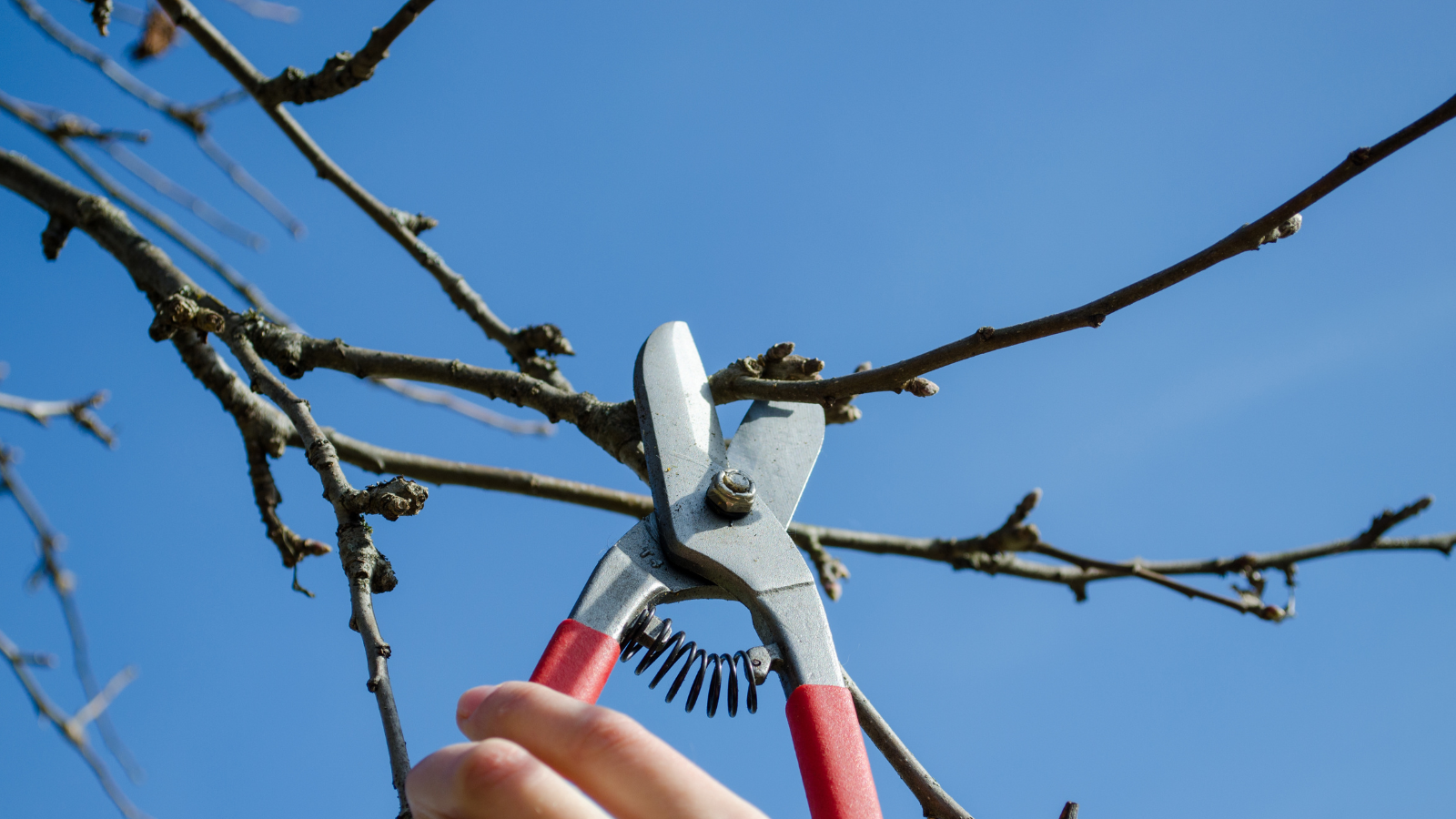
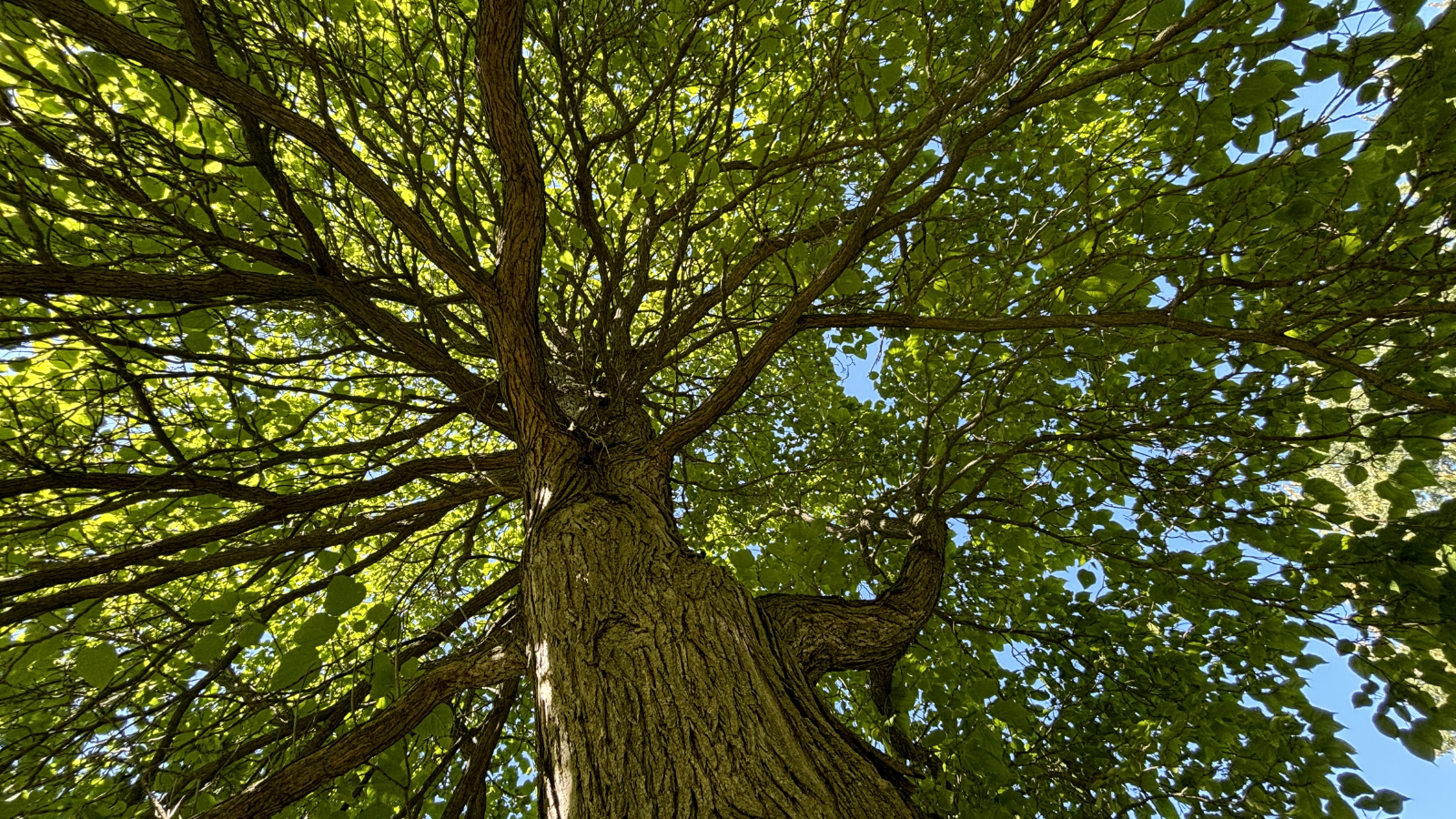
.png)
